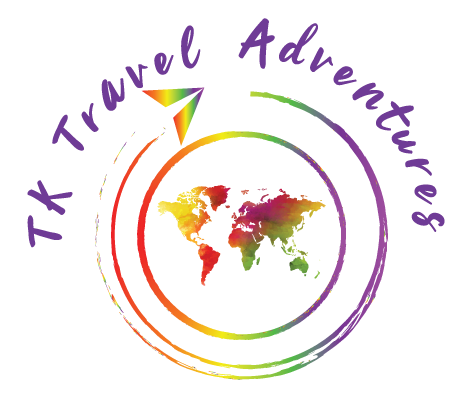Canada, the second-largest country in the world by total area, is a federation comprising ten provinces and three territories, stretching from the Atlantic to the Pacific and into the Arctic Ocean, covering over 9.98 million square kilometers. Each province and territory has its unique geography, culture, and attraction, offering visitors a wide range of natural wonders, economic activities, and cultural experiences.
-
 Alberta | Photo: ShutterstockSee More
Alberta | Photo: ShutterstockSee MoreAlberta
Alberta is known for its stunning natural landscapes, including the majestic Canadian Rockies, vast prairies, and beautiful national parks like Banff and Jasper. Located in western Canada, Alberta is a key economic center driven by the oil and gas industry, agriculture, and technology.
-
 British Columbia | Photo: ShutterstockSee More
British Columbia | Photo: ShutterstockSee MoreBritish Columbia
British Columbia is Canada's westernmost province and features a diverse geography from the Pacific coastline to mountain ranges like the Rockies and the Coast Mountains. It's renowned for its natural beauty, including temperate rainforests and rugged coastlines. British Columbia is also known for Vancouver, blending urban living with outdoor recreation opportunities.
-
 Manitoba | Photo: ShutterstockSee More
Manitoba | Photo: ShutterstockSee MoreManitoba
Manitoba is characterized by vast prairies, lakes, and the northern Arctic tundra. It's known for its diverse wildlife, including polar bears, and is a significant agricultural hub. Winnipeg, the capital, is known for its cultural institutions and the historic Forks market.
-
 New Brunswick | Photo: ShutterstockSee More
New Brunswick | Photo: ShutterstockSee MoreNew Brunswick
New Brunswick, in eastern Canada, borders Quebec to the north, the Atlantic Ocean to the east, and the U.S. state of Maine to the west. Its geography includes forested hills, rivers, and a picturesque coastline. Known for its bilingual population (English and French), New Brunswick's economy is driven by forestry, mining, and fishing.
-
 Newfoundland and Labrador | Photo: ShutterstockSee More
Newfoundland and Labrador | Photo: ShutterstockSee MoreNewfoundland and Labrador
Newfoundland and Labrador is Canada's easternmost province, comprising the island of Newfoundland and mainland Labrador. Its rugged, coastal geography is home Gros Morne National Park and the Labrador wilderness.
-
 Nova Scotia | Photo: ShutterstockSee More
Nova Scotia | Photo: ShutterstockSee MoreNova Scotia
Nova Scotia, a peninsula surrounded by the Atlantic Ocean, features a rugged coastline dotted with bays, coves, and historic sites like the famous Peggy's Cove. Known for its maritime culture, the province's economy revolves around fishing, shipbuilding, and tourism. Halifax, the capital, is a key cultural and economic center.
-
 Ontario | Photo: ShutterstockSee More
Ontario | Photo: ShutterstockSee MoreOntario
Ontario, Canada's most populous province, is home to diverse landscapes, including the Great Lakes, Niagara Falls, and vast stretches of wilderness. It's an economic powerhouse, known for manufacturing, technology, and finance, with Toronto, Canada's largest city, and Ottawa, the nation's capital, as its key urban centers.
-
 Prince Edward Island | Photo: ShutterstockSee More
Prince Edward Island | Photo: ShutterstockSee MorePrince Edward Island
Prince Edward Island (PEI), Canada's smallest province, is known for its red sand beaches, lighthouses, and fertile farmland. Located in the Gulf of St. Lawrence, PEI is renowned for its seafood, particularly mussels and lobsters, and is the setting for the famous novel "Anne of Green Gables."
-
 Quebec | Photo: ShutterstockSee More
Quebec | Photo: ShutterstockSee MoreQuebec
Quebec is Canada's largest province by area and is predominantly French-speaking. Its geography ranges from the forested Canadian Shield to the north and the fertile plains of the St. Lawrence River Valley. Quebec is known for its unique culture, the historic city of Quebec City, and Montreal, a cosmopolitan hub of arts and education.
-
 Saskatchewan | Photo: ShutterstockSee More
Saskatchewan | Photo: ShutterstockSee MoreSaskatchewan
Saskatchewan is characterized by its vast prairies, rolling hills, and agricultural lands. It's known for its natural resources, including potash, uranium, and oil. The province is also home to a rich Indigenous heritage.
-
 Northwest Territories | Photo: ShutterstockSee More
Northwest Territories | Photo: ShutterstockSee MoreNorthwest Territories
Northwest Territories is known for its remote wilderness, including parts of the Arctic Circle, the Great Slave Lake, and Nahanni National Park Reserve. Its economy is based on natural resources such as diamonds, gold, and natural gas.
-
 Nunavut | Photo: ShutterstockSee More
Nunavut | Photo: ShutterstockSee MoreNunavut
Nunavut, Canada's newest and largest territory, is a vast land of Arctic tundra and ice. It's home to a predominantly Inuit population, who maintain their traditional way of life. Nunavut is known for its unique wildlife, Inuit art, and cultural heritage.
-
 Yukon | Photo: ShutterstockSee More
Yukon | Photo: ShutterstockSee MoreYukon
Yukon is renowned for its wild, mountainous landscapes, including Kluane National Park and Reserve, home to Canada's highest peak, Mount Logan. The territory is also famous for the Klondike Gold Rush history, which shaped its development. Today, Yukon is a popular destination for outdoor activities and adventure tourism.













